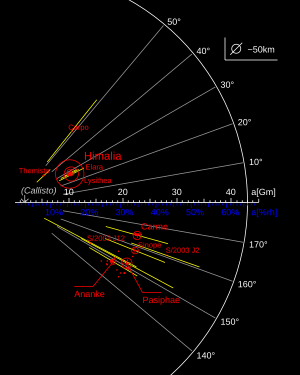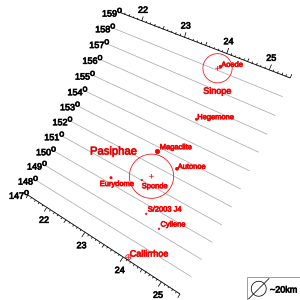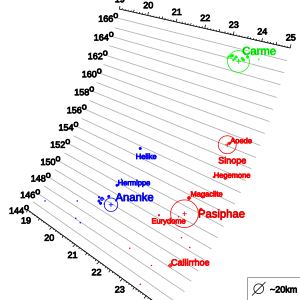Pasiphaë group facts for kids
The Pasiphaë group is a group of retrograde non-spherical moons of Jupiter that follow similar orbits to Pasiphaë and are thought of have a common origin.
Their semi-major axes (distances from Jupiter) range between 22,800,000 and 24,100,000 km (the same range as the Carme group), their inclinations between 144.5° and 158.3°, and their eccentricities between 0.25 and 0.43.

Core members of the group include (from the biggest to the smallest):
The International Astronomical Union (IAU) reserves names ending in -e for all retrograde moons, including this group's members.
Origin
The Pasiphaë group is believed to have been formed when Jupiter captured an asteroid which broke up after a collision. The original asteroid was not disturbed heavily: the original body is calculated to have been 60 km in diameter, about the same size as Pasiphaë; Pasiphaë has 99% of the original body's mass. However, if Sinope belongs to the group, the amount is much smaller, 87%.
The differences of colour between the objects (grey for Pasiphaë, light red for Callirrhoe and Megaclite) also suggest that the group could have a more complex origin than a single collision.
See also
 In Spanish: Grupo de Pasífae para niños
In Spanish: Grupo de Pasífae para niños



